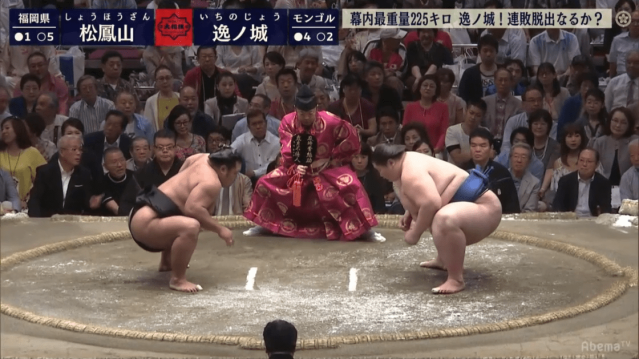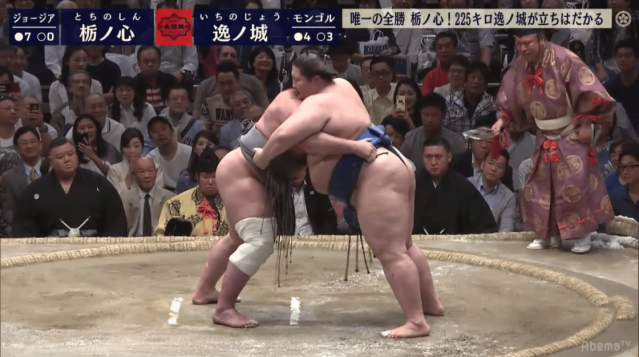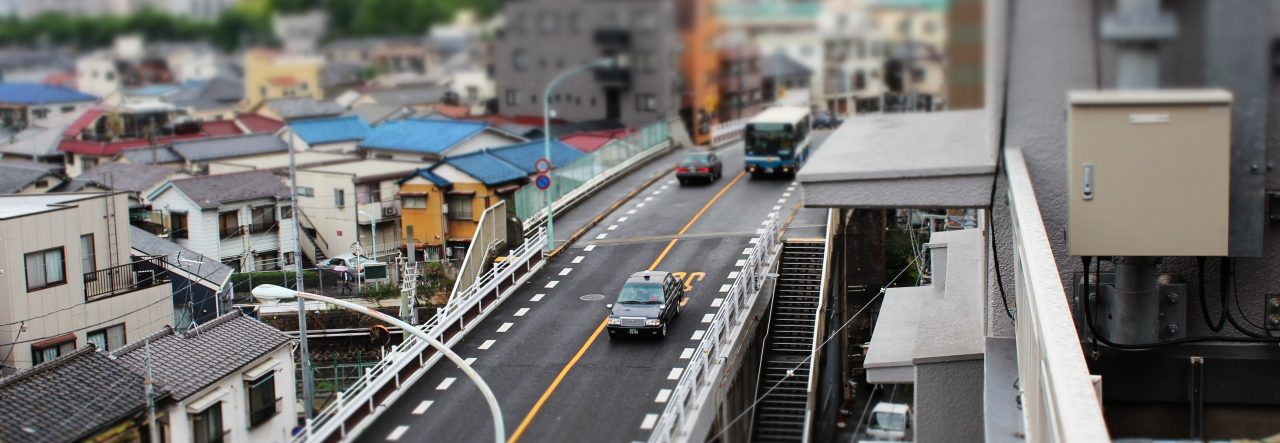Somehow despite being a long-term Japanophile, I’d managed to avoid sumo wrestling until long after I left the country. Last September I accidentally caught part of the Autumn Tournament (Aki Basho) on NHK and the rest, as they say, is history. There are six major tournaments every year, each lasting fifteen days, and I’ve been obsessively following the last four. We’re now halfway through my fifth, the Summer Tournament (Natsu Basho), on the important Day 8. Wrestlers compete once per day for a total of 15 bouts and a potential perfect record of 15 wins, 0 losses. Day 8 is the first day wrestlers can achieve a ‘winning record’, i.e. more wins than losses, so there’s extra pressure. A winning record (8 wins, 7 losses or better) might see a wrestler promoted before the next tournament, while a losing record (7-8 or worse) could see them demoted, losing ranks or even dropping out of the top division altogether.
Outside of Japan, it’s tough to follow sumo broadcasts. There are multiple divisions of wrestlers, but out of the country it’s only really feasible to follow the top makuuchi division. NHK World Japan – the online, English language component of Japan’s state broadcaster – shows daily highlights of the top division in 20 minute segments usually featuring the most popular wrestlers or most interesting bouts. In the latest tournament, they’ve also started showing some live footage – today featured around 50 minutes including most of the top-ranked wrestlers, while still omitting the bottom half of the division. If you live in Japan, or with some sleight of hand live in Japan, there’s also online television service Abema.tv which covers the whole top division tournament live and then broadcasts re-runs throughout the rest of the day. Their coverage is all in Japanese, but once you’ve got the basic rules down it’s fairly easy to follow each bout (and if you speak Japanese, you get to enjoy the commentary that typically includes a retired wrestler, a sports commentator, and a ‘sumo beginner’ who usually just happens to be an attractive young woman to whom the other two can mansplain).
Because there are only around 40 wrestlers in the top division, it quickly becomes quite easy to recognise the stars and your favourites. The yokozuna are at the very top of the top division and enjoy a great deal of status and celebrity for their rank, but I’m not really interested in any of them: Hakuhō is an all-time sumo great with the most career tournament wins ever recorded, but he’s demonstrated a habit of being a very sore loser in the brief time I’ve been following the sport; Kakuryū is a solid wrestler but has sat out several of the tournaments I’ve watched due to injuries; and lastly, Kisenosato is the first native Japanese yokozuna since 1998, but his quick promotion was controversial, and his career afterwards has been so dogged by injuries that rumours are swirling he’s about to retire. Instead of the big three, I’m much more interested in some of the lower-ranked wrestlers who have far more to prove and are therefore more interesting. My personal favourites are the Georgian Tochinoshin, Mongolian Ichinojō, and top division veteran Aminishiki.
Aminishiki, at 39, is the oldest top division wrestler. At this point, it feels that he’s more tape than man. Relatively lightweight for sumo (he’s “only” ~135kg in a division where most of the wrestlers are 20, 30, or 40kg heavier than him) and hampered by many, many injuries and what seems like miles of sports tape and bandages, he relies more heavily on interesting throwing, tripping, and grappling techniques than some of the younger, stronger wrestlers. It’s hard not to root for him, though at this point it feels like he’s struggling to stay in the top division; he was demoted out into the next division down for March but his record there put him back in makuuchi for this May tournament. Entering the sport in 1997 he’s racked up some impressive records, including over 1700 career bouts and over 850 career wins. Despite now tending to rack up more losses than wins, it’s clear whenever he does achieve victory that he can still go toe-to-toe with much younger wrestlers and outwit them through experience or technique.

Ichinojō fascinates me for a different reason: hitting 225kg in this tournament, he’s the heaviest wrestler in the top division. A Mongolian nomad, he excelled at Mongolian wrestling before moving to Japan, entering into judo and then sumo, and taking the title of amateur yokozuna in 2013. Despite his massive size – he’s typically 20 or 30kg heavier than his opponents, sometimes as much as ~80kg – he doesn’t just use his weight to shove people out of the ring. Like Aminishiki, he prefers grappling techniques. On the other hand, he seems to have a bad habit of ‘giving up’ when caught wrong-footed and just allowing himself to be led gently out of the ring. It’s obvious that he has a lot of power that he doesn’t always deploy – in one bout late last year, he showed a rare display of force in removing an opposing wrestler from the ring by practically lifting him out by the neck. Because there are no weight divisions in sumo, his extreme size makes for some extraordinary match-ups, and that’s why I like to follow him even when he’s not doing his best.

Lastly, where Ichinojō is the heaviest wrestler, Tochinoshin just might be the strongest. When I first started watching sumo last year he was coming back from an injury and didn’t stand out, but in January this year he won the tournament with a 14-1 record despite being near the bottom of the top division – only a maegashira-ranked wrestler. That victory got him promoted to the third highest rank of sekiwake, skipping several maegashira positions and the rank of komusubi altogether. But it was the way he achieved that victory that stood out: Tochinoshin picks up his opponents by the belt and physically carries them out of the ring, lifting them over the straw bales (tawara) that mark the edge of the ring, or bodily lifting them off the floor, leaving veteran wrestlers kicking at air. It was starting to feel like once he had that belt grip, he was unstoppable. Following his big promotion in January he didn’t excel in March, but still got a 10-5 record and managed to defeat tournament winner Kakuryū, and now he’s considered to be a contender for the rank of ozeki – the second highest sumo rank and only one step behind the coveted title of yokozuna.
As of Day 8 in the Summer Tournament, Tochinoshin has an unbroken 8-0 record. That’s already a kachi–koshi or ‘winning record’, and with just two or three more victories he should be able to guarantee his promotion to ozeki. At this rate, though, he’s also a contender for the yusho or tournament win: the two competing yokozuna, Hakuhō and Kakuryū, are both sitting on 7-1 records, along with maegashira Chiyonokuni. However, up to this point Tochinoshin has mostly been fighting lower ranked wrestlers; he has yet to face either yokozuna or Gōeidō, the only ozeki currently competing given Takayasu has withdrawn due to injuries. On the other hand, Tochinoshin has shown he can defeat yokozuna in the past, and Gōeidō is having an appalling tournament, so who will eventually take the Emperor’s Cup is still an open question.

Today saw Tochinoshin heave out the 225kg Ichinojō in the most tense bout of the day, which for a moment seemed like an unstoppable force hitting an immovable object before the Georgian got his footing and thrust Ichinojō out. I’m psyched to find out whether he can earn his much-deserved promotion, or even go the distance like January. Roll on Day 9.




